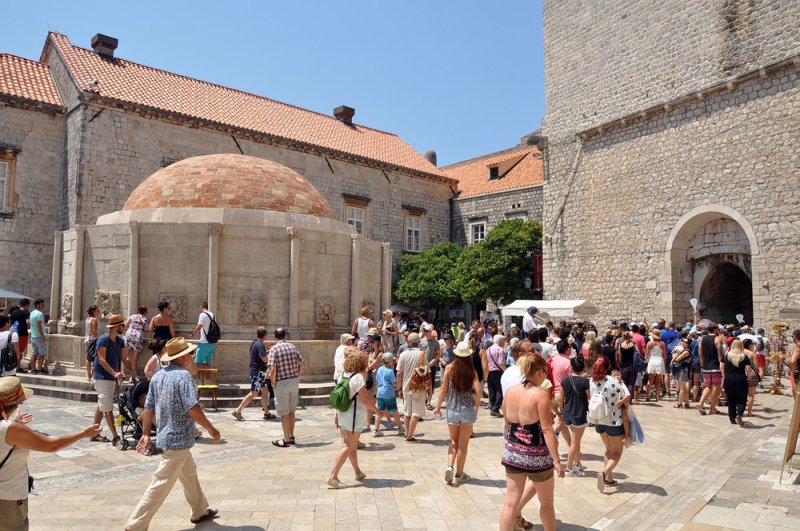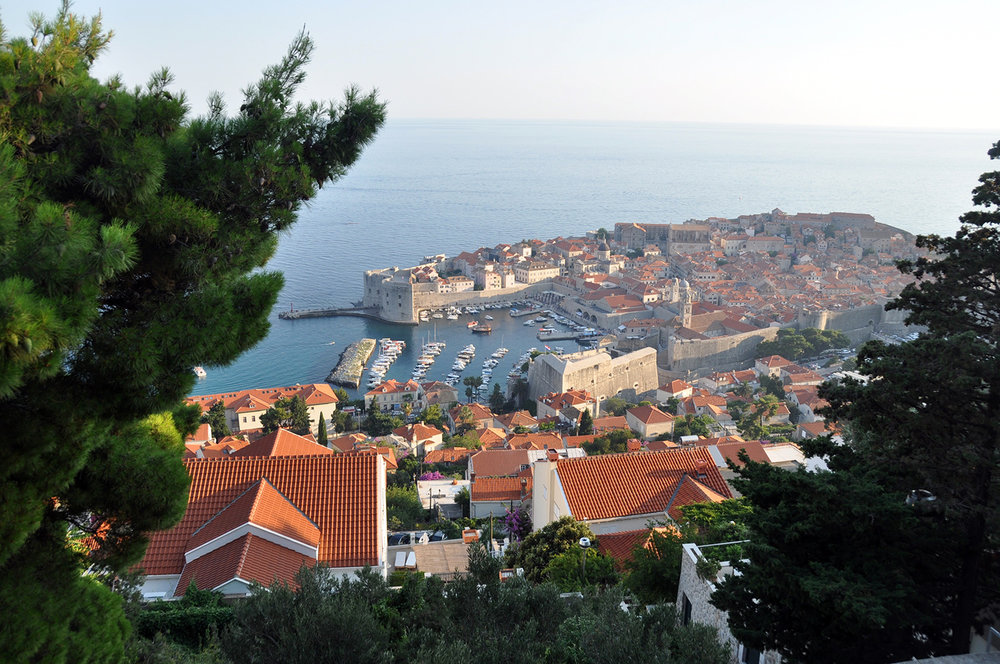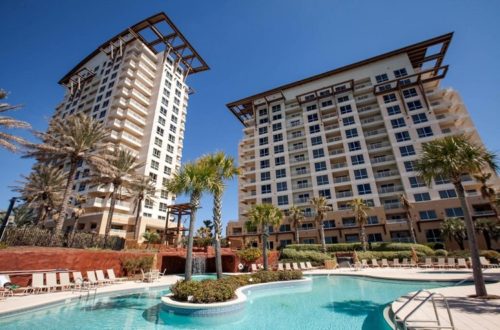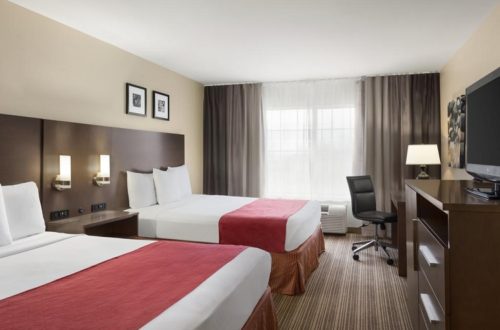Croatia houses beautiful coastlines, stunning lakes and forests, a remarkable history, fantastic wine, and delightful sea-to-table cuisine. Looking for the best sailing getaway? A food and wine get away from? An adventure in the wild? Croatia has it all.
With thousands of miles of seafront and more than a thousand islands, Croatia’s coastline is Central Europe’s Riviera. Holiday-makers love its pebbly beaches, balmy warmer summer months weather, and remarkable mountains. But there’s record here as well: from ruined Roman arenas and Byzantine mosaics to Venetian bell towers, Habsburg villas, and even communist concrete, previous rulers have gone their draw. Most travelers flock to the Dalmatian Coast, where dramatic cliffs rise from the deep and islands are scattered just just offshore. But savvy travelers make time for more: the Venetian-flavored Kvarner Gulf and Istrian Peninsula, the beautiful waterfalls of Plitvice Lakes, and Zagreb, the country’s engaging capital.
Do you need a visa?
Majority of foreign tourists don’t need visa to enter Croatia, including, however, not limited to, EU countries, UK, USA, Australia, Canada, and New Zealand.
Foreign citizens of those countries can enter Croatia, and stay here for 3 months within 180 days period.
Individuals of EU countries can enter Croatia only using their ID greeting card, all others need to visit with a valid passport to be able to enter Croatia.
If you need a visa to enter Croatia, but carry a valid Schengen visa, as well as visas for Cyprus, Romania and Bulgaria, you do not desire a separate visa for Croatia. You are absolve to happen to be Croatia under the health of your current visa from all these countries.
Croatia has three distinct climates: continental weather in it has the interior, the Mediterranean environment across the coast, and the mountain weather above 1200 m.
Along the coast you can expect dry, hot, and sunny summers, and mild, although sometimes wet, winters. Weather along the south Adriatic region of Dalmatia is generally drier and sunnier than in the northern Adriatic region of Istria. Daily heat may vary up to 5°C.
Average summer months temperatures remain 22°C, but this also means that in July and August you may expect over 40 times with daily temperatures of over 30°C. Average winter temps remain 10°C, with January being the coldest month with daily average temperatures of less than 10°C. The common sea heat range varies from 12°C in winter to 25°C in summer season.

Croatia’s interior has a medium continental climate. Which means that winters are chilly and moist, with lots of fog, while summers get hot, and dried out. Average winter heat remain 4°C, while the average summer time temperature are around 22°C.
travel to Croatia: Money
While Croatia is a part of European Union, the united states still doesn’t use Euro as a currency. Croatian money is Kuna (brief: kn), and the exchange rate reaches about 7,5 kn per 1€, 6,5 kn per 1$, and 8,4 kn per 1£.
You can even pay a lot of things with Euro, like accommodation, meals in restaurants, pay-tolls on Croatian roads, and gasoline. However you’ll usually make your change in Kuna, and the exchange rate can be less favourable than at the exchange office buildings.
When withdrawing money from the ATM, make an effort to use public banks’ ATM machines (they must have a sign of 1 of Croatian banks like Zagrebacka, Privredna OTP, Erste, or Adikko bank). These ATM machines are usually near a bank’s branch office buildings. In resorts and hotels you’ll more often find Euronet (blue and yellowish) or Auro Domus ATM machines (yellowish and dark-colored). While they are often located at more dominant spots in cities, hotels and resorts, and thus more convenient to make use of, they are also more expensive to use. However, if convenience is more important than few euros occasionally, go on and use these machines as well.
Another thing about the money that you’ll require to be aware of is so called dynamic currency conversion. This essentially means that the quantity of your credit cards transaction is changed into your home money at the point of sales (rather than by card issuer). In hotels or restaurants, or maybe about anywhere where you intend to pay by bank card, the personnel might ask you if you like the fee in local money (Kuna), or in your own money. While theoretically you may earnings sometimes from being costed within your own money by merchant at that moment, it almost never happens the truth is. You can expect to just wrap up paying more than you normally would. So always choose to pay in local currency. Or ask for the exchange rate and compare it with one you get that day on internet.
Best time to move
Majority of travellers check out Croatia in July and August. However, busiest time is not necessarily the best time to visit.
The optimum time to go to Croatia is June and September. There are much less people around (definitely no queues, traffic jams, nor crowded beaches), the elements is still warm and sunny, prices are less expensive, and the ocean is warm enough to swim in. Another tip: Sea is usually warmer in Sept than in June.
Also, keep in mind that Croatia is incredibly popular among Germans, and Austrians, especially the northern Adriatic parts of Istria, and Kvarner. So crowds (and accommodation prices) tend to increase around German school holiday seasons (like Corpus Christi – it’s either in middle May to early on June, or late May to middle June; it changes from year to season). Ha, but this does mean that in the year when German university holidays are in May, hotels often offer special discounts for June. And vice versa.
What things to bring to Croatia
Most of us have our own guidelines an tricks as it pertains to packaging. However, we’ll offer you few ideas on what things to bring to, and what to wear in Croatia.
Croatia has four times, and 3 distinctive climates: Mediterranean weather across the coast, mountain weather on it is rugged mountains and a continental local climate inland.
This means that if you are visiting Croatia through the summer most your clothes should be light. Nevertheless, a windbreaker coat, and a pair of long shorts, and leggings always come very useful. For the rest, require a couple of shorts and tops that you can mix and match, or few casual summer dresses. Remember your beachwear including swimsuits and cover ups, water shoes, sun glasses, and microfiber towel. A pair of sandals, and a pair of walking shoes is also essential.
As for the others, don’t forget your photo equipment (with lots of extra batteries); waterproof mobile phone tote; adapters and converters (Croatia uses 220V, 50 Hz occurrence, and type C & F plugs. Both are similar plugs with two circular prongs with 19 mm between the two); and other small things you will see indispensable in Croatia.
Croatia Travel Guide: Addressing Croatia
Travelling to Croatia from any place in Europe is quite easy. From April through Sept many airlines have direct flights from around Europe to all major Croatian cities. Besides, Split and Zagreb are linked by airplane with the others of Europe over summer and winter. For the complete home elevators flights agenda to Croatia check with Skyscanner website.
We’ve also recently found out about Scottt’s cheap flights program. They quite simply seek out airlines mistakes or intentionally money saving deals and email them for you. We haven’t used it ourselves, but it seems worth a go (they may have a free of charge plan too).
Despite spending the previous ten years as Europe’s fastest-rising holiday destination, Croatia still doesn’t feel like a place that is thoroughly worked over by the traveler industry. With new trends continued a human range and businesses keeping a pronounced local flavour, the Adriatic coast emphatically retains a distinctive persona. Whether you’re interested in unspoiled Mediterranean islands, edgy metropolitan culture, Game of Thrones location tours or just splashing around in the Adriatic’s famously clear waters, Croatia is a destination to discover numerous landscapes and experience.
A renewed admiration for natural ingredients is among the most watchword of Croatian delicacies, with locally sourced foodstuffs, wines and olive oils taking a stand increasingly well to globalization. Croatia has an evergrowing reputation for specific niche market celebrations – not just in the party-the-weekend-away music happenings performed on beaches and in old forts up and down the coast, but also in the mushrooming variety of arts celebrations and small-town cultural shindigs. And in Zagreb and in other places, a raft of new galleries and artwork attractions has given the united states an awesome and modern day sheen.
Croatia is blessed with an abundance of natural riches, boasting almost 2000km of rocky, indented shore and greater than a thousand islands, many blanketed in luxuriant vegetation. Even through the heavily frequented a few months of July and August there are still enough off-the-beaten-track islands, peaceful coves and stone-built sportfishing villages to cause you to feel like you’re visiting European countries at its most unspoiled. There’s a great deal in the form of urbane glamour too, if that’s what you’re after, with swanky hotels, yacht-filled harbours and cocktail pubs aplenty – especially in à-la-mode vacation spots such as Dubrovnik and Hvar. Wherever you go though you’ll realize that Croatia keeps an charm for independent tourists that’s an issue at more package-oriented spots in other places in the Mediterranean. Most budget and mid-range accommodation continues to be by means of private rentals, and there has been an explosion in the amount of backpacker-friendly hostel-type institutions in the major cities. When it comes to seaside-hugging campsites, Croatia is at a league of its.
The united states has certainly come quite a distance since the early 1990s, when within the space of half of a decade – almost uniquely in modern-day Europe – it experienced the collapse of communism, a war of countrywide survival and the securing of independence. Practically twenty-five years on, site visitors will be struck by the tangible sense of take great pride in that independent statehood has taken. National culture is a definately not one-dimensional affair, however, and far of the country’s personality is because of its geographical position straddling the point at which the sober Central Western european virtues of effort and order collide with the spontaneity, vivacity and flavour for the nice things in life that characterize the countries of southern Europe – a cultural blend of Mitteleuropa and Mediterranean that gives Croatia its particular flavour. Not just that, however the country also stands on one of the fantastic fault lines of Western civilization, the point where the Catholicism of Central Europe fits the Islam and Orthodox Christianity of the East. Though Croats customarily see themselves as a Traditional western people, unique from the other South Slavs who comprised the former talk about of Yugoslavia, lots of the hallmarks of Balkan culture – patriarchal young families, hospitality towards strangers and a fondness for grilled food – are as common in Croatia as in any other part of southeastern European countries, suggesting that the country’s romance using its neighbours is closer than many Croats may admit.





